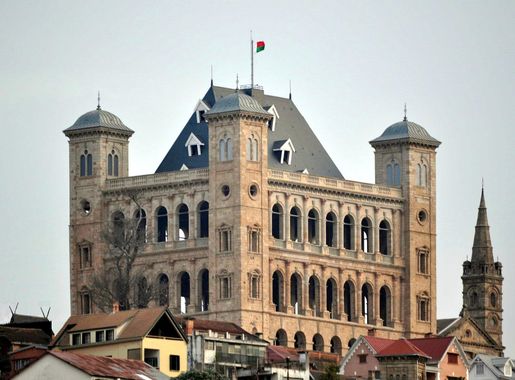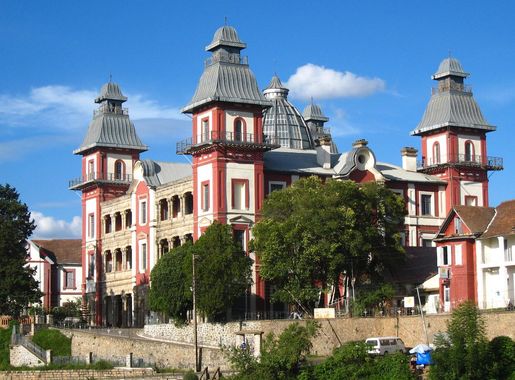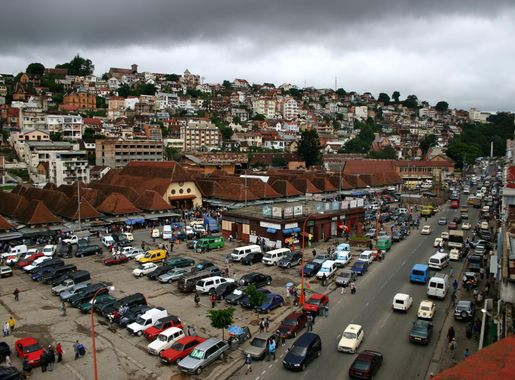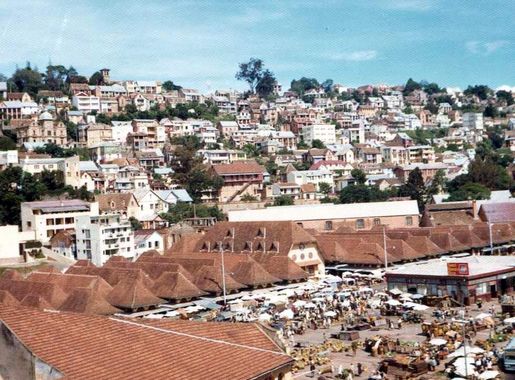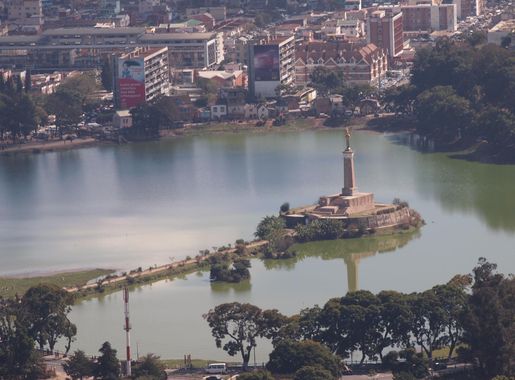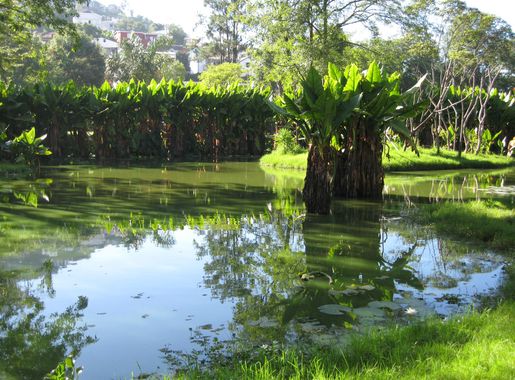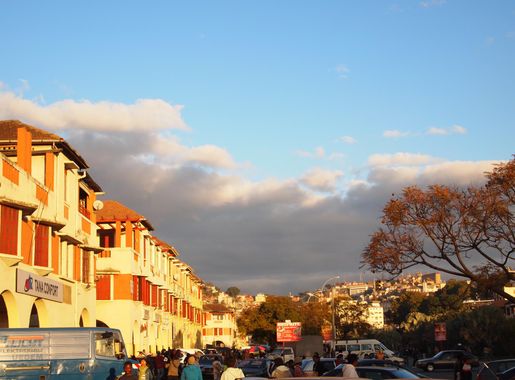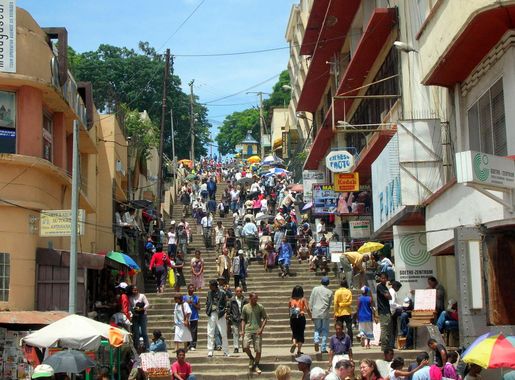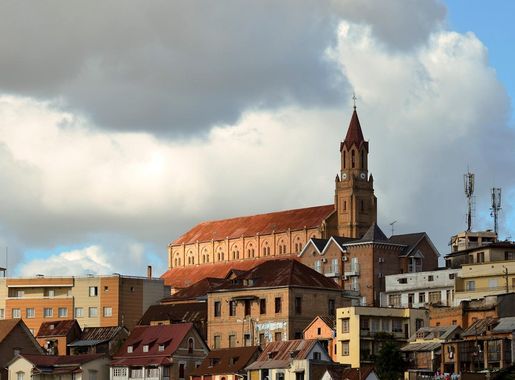
Antananarivo City Center: The Heartbeat of Madagascar
Explore the vibrant heart of Madagascar in Antananarivo City Center, where history, culture, and modernity converge in a captivating urban tapestry.
Antananarivo City Center, often referred to as Tana, is the vibrant capital of Madagascar. Nestled in the central highlands, this bustling hub offers a unique blend of historical charm and modern energy. It's a place where cobblestone streets meet lively markets, and colonial architecture stands side by side with contemporary buildings. The City Center is the perfect starting point to explore the rich cultural tapestry of Madagascar. A stroll through Independence Avenue reveals the city's French colonial past, with its grand buildings and tree-lined streets. The Avenue is also home to some of the city's best cafes and restaurants, where you can savor local Malagasy cuisine. Don't miss the iconic Analakely Market, a sensory overload of colors, smells, and sounds where you can find anything from fresh produce to handcrafted souvenirs. One of the must-visit sites in the City Center is the Queen's Palace, offering panoramic views of the city and a glimpse into the royal history of the Merina Kingdom. The nearby Andafiavaratra Palace Museum showcases an impressive collection of artifacts. For a more relaxed experience, head to the Tsimbazaza Zoo and Botanical Gardens, home to various endemic species and lush, green spaces perfect for a leisurely afternoon. As you explore, you'll find that Antananarivo City Center is not just a place to visit but a place to experience. Its dynamic atmosphere, rich history, and welcoming locals make it an unforgettable destination.
Local tips in Antananarivo City Center
- Visit early in the morning to avoid the crowds at popular attractions like Independence Avenue and Analakely Market.
- Keep an eye on your belongings in crowded areas as pickpocketing can be an issue.
- Hire a local guide to get a deeper understanding of the historical sites and their significance.
- Try the local street food but ensure it's from a busy stall to ensure freshness.
- Wear comfortable walking shoes as the City Center is best explored on foot.
Antananarivo City Center: The Heartbeat of Madagascar
Antananarivo City Center, often referred to as Tana, is the vibrant capital of Madagascar. Nestled in the central highlands, this bustling hub offers a unique blend of historical charm and modern energy. It's a place where cobblestone streets meet lively markets, and colonial architecture stands side by side with contemporary buildings. The City Center is the perfect starting point to explore the rich cultural tapestry of Madagascar. A stroll through Independence Avenue reveals the city's French colonial past, with its grand buildings and tree-lined streets. The Avenue is also home to some of the city's best cafes and restaurants, where you can savor local Malagasy cuisine. Don't miss the iconic Analakely Market, a sensory overload of colors, smells, and sounds where you can find anything from fresh produce to handcrafted souvenirs. One of the must-visit sites in the City Center is the Queen's Palace, offering panoramic views of the city and a glimpse into the royal history of the Merina Kingdom. The nearby Andafiavaratra Palace Museum showcases an impressive collection of artifacts. For a more relaxed experience, head to the Tsimbazaza Zoo and Botanical Gardens, home to various endemic species and lush, green spaces perfect for a leisurely afternoon. As you explore, you'll find that Antananarivo City Center is not just a place to visit but a place to experience. Its dynamic atmosphere, rich history, and welcoming locals make it an unforgettable destination.
Iconic landmarks you can’t miss
Tsimbazaza Zoo and Botanical Gardens
Explore the unique wildlife and lush gardens of Tsimbazaza Zoo and Botanical Gardens in Antananarivo, a must-visit destination for nature enthusiasts.
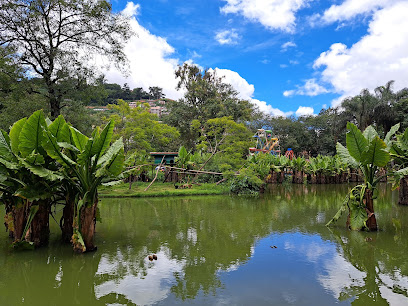
Queen's Palace
Discover the grandeur of Madagascar's royal history at the Queen's Palace, a heritage museum in Antananarivo showcasing the island's rich cultural legacy.
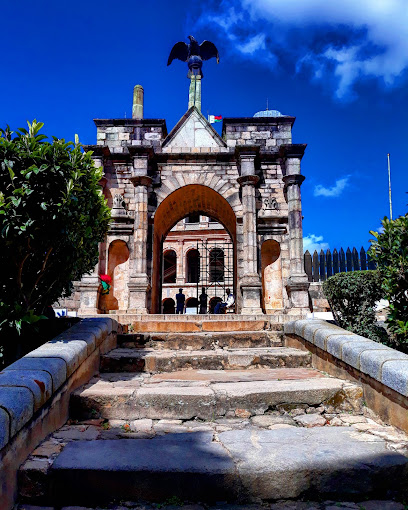
Radisson Blu Hotel, Antananarivo Waterfront
Discover the luxurious Radisson Blu Hotel in Antananarivo, offering stunning waterfront views, elegant accommodations, and a taste of Malagasy hospitality.
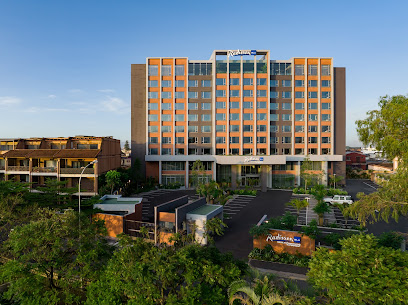
Radisson Hotel Tamboho Waterfront Antananarivo
Experience luxury and comfort at the Radisson Hotel Tamboho Waterfront, your perfect getaway in Antananarivo, Madagascar.
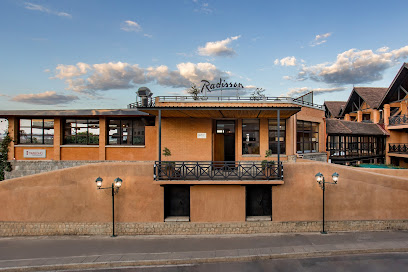
Radisson Serviced Apartments Antananarivo City Center
Experience the comfort of home in the heart of Antananarivo at Radisson Serviced Apartments, your ideal base for exploring Madagascar's capital.
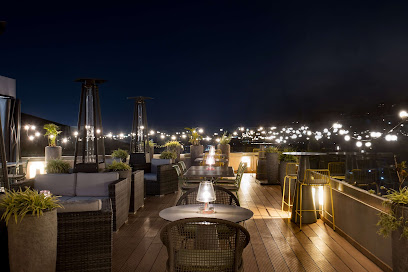
Cathedrale catholique d Andohalo
Explore the stunning Cathedrale catholique d'Andohalo, a historic landmark in Antananarivo, showcasing architectural beauty and spiritual significance.

Andafiavaratra Palace
Discover the historical splendor of Andafiavaratra Palace, a key museum in Antananarivo showcasing Madagascar's royal heritage and cultural treasures.
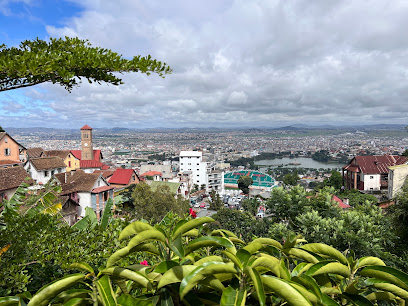
Tana Water Front
Discover Tana Water Front, Antananarivo's vibrant shopping mall featuring local crafts, diverse dining, and lively entertainment in the heart of Madagascar.
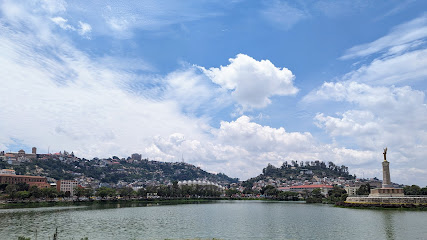
Rova d'Ambohidratrimo
Discover the rich royal history and breathtaking views at Rova d'Ambohidratrimo, a must-see historical landmark in Antananarivo, Madagascar.
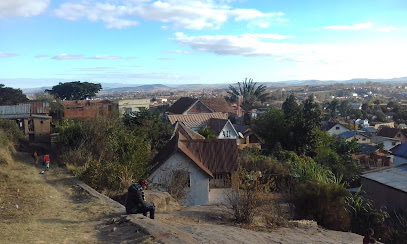
Digue Market
Discover the essence of Madagascar at Digue Market, a vibrant shopping destination filled with local crafts, delicious foods, and unique souvenirs.

Le Palais de Justice d'Ambatondrafandrana
Discover the historical significance and architectural elegance of Le Palais de Justice d'Ambatondrafandrana in Antananarivo, Madagascar.
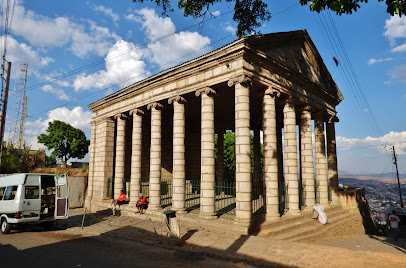
Ambohitsorohitra Palace
Discover the royal heritage of Madagascar at Ambohitsorohitra Palace, a stunning historical landmark in the heart of Antananarivo.
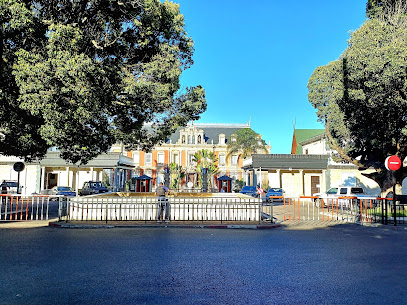
CITY CENTER
Discover the lively City Center of Antananarivo, a vibrant shopping mall blending culture, cuisine, and commerce in Madagascar's capital.

Alhambra Gallery Ankadimbahoaka
Discover vibrant shopping and dining at Alhambra Gallery Ankadimbahoaka in Antananarivo, a cultural hub for unique Malagasy crafts and cuisine.
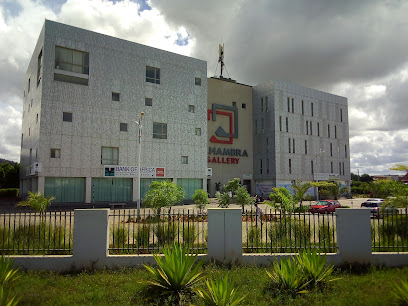
Unmissable attractions to see
Lemurs Park
Explore the magic of Madagascar at Lemurs Park, a premier sanctuary for unique lemur species and a hub for conservation and education.

Fetnyglot2our Madagascar
Discover the wonders of Madagascar through expert-guided tours, adventure sports, and unforgettable wildlife experiences with Fetnyglot2our.
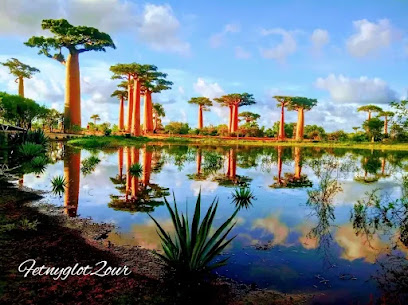
Essential places to dine
Nerone Ristorante Italiano (Madagascar)
Experience authentic Italian cuisine at Nerone Ristorante Italiano in Antananarivo – where Italy meets Madagascar in every delicious bite.
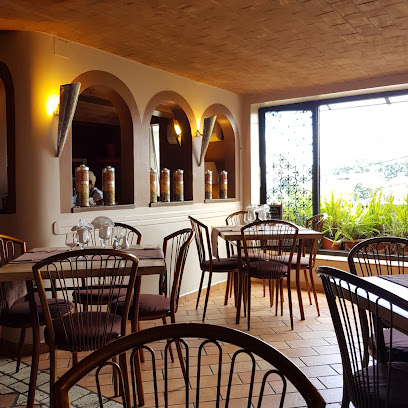
Le Carnivore - Restaurant Bar Lounge
Experience the rich culinary heritage of Madagascar at Le Carnivore - a must-visit restaurant bar lounge in Antananarivo.
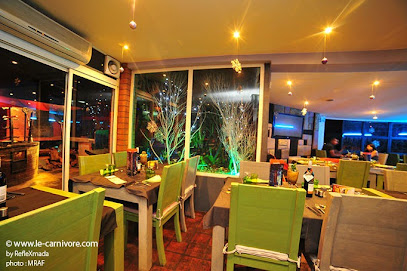
Restaurant Les Artistes
Experience authentic Malagasy cuisine at Restaurant Les Artistes in Antananarivo - a culinary journey through Madagascar's rich flavors.
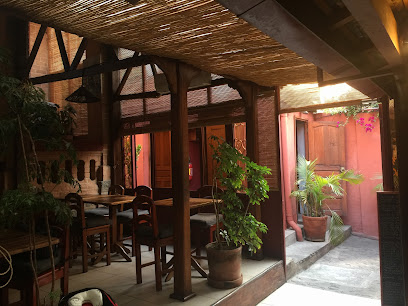
La petite Brasserie
Experience authentic Malagasy cuisine at La Petite Brasserie in Antananarivo—where local flavors meet international flair.
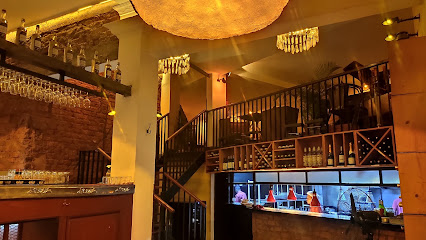
Marais Restaurant Madagascar
Discover exquisite Haute French cuisine at Marais Restaurant in Antananarivo, where elegance meets local charm for an unforgettable dining experience.
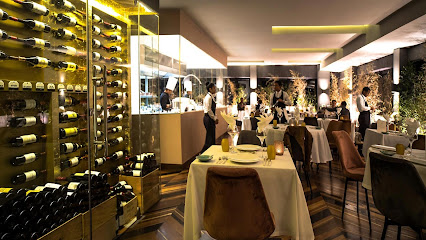
La Terrasse de Tydouce
Experience authentic Malagasy cuisine with stunning views at La Terrasse de Tydouce in Antananarivo.
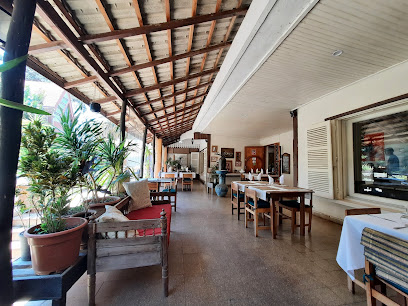
La Canopée Restaurant
Experience exquisite flavors and stunning city views at La Canopée Restaurant in Antananarivo - a culinary gem in Madagascar.

Restaurant Le Complexe
Experience the vibrant flavors of Madagascar at Restaurant Le Complexe in Antananarivo's lively shopping scene.
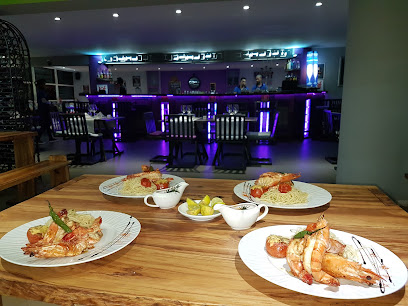
Haka Fy Authentic Restaurant
Discover authentic Malagasy cuisine at Haka Fy Authentic Restaurant in Antananarivo's historic gardens - a true taste of Madagascar awaits!
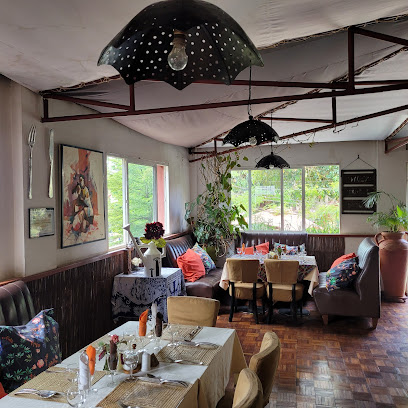
Restaurant Maka'ai
Discover the authentic taste of Madagascar at Restaurant Maka'ai – where local flavors meet warm hospitality in Antananarivo.

Markets, malls and hidden boutiques
La city Ivandry
Explore La City Ivandry, the vibrant shopping hub of Antananarivo, offering a blend of local culture and modern retail experiences.
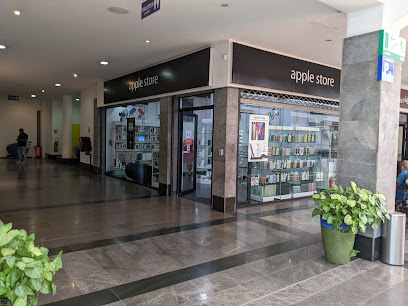
Suprême Center
Explore the latest in technology at Suprême Center, Antananarivo's premier computer store, offering top-notch gadgets and expert advice.

Art Malagasy - Ambohitrimanjaka
Immerse yourself in Madagascar's vibrant culture at Art Malagasy, where shopping meets local artistry in a lively atmosphere.
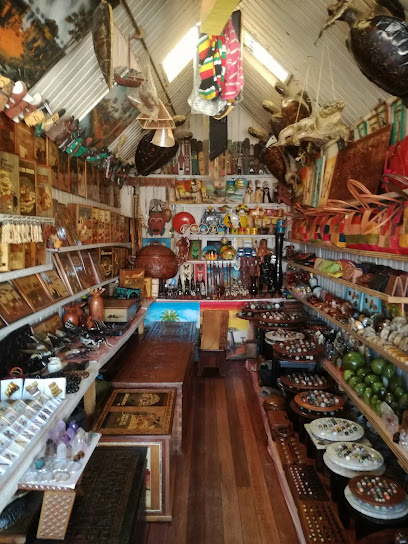
Mass'In La City
Explore cutting-edge technology and gaming at Mass'In La City, the premier computer store in Antananarivo, Madagascar.
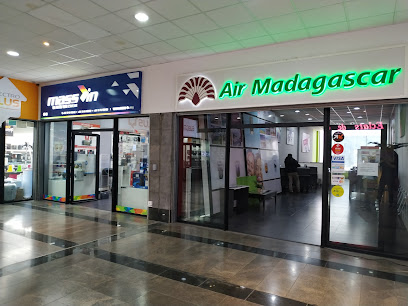
Digue Market
Experience the colors and flavors of Madagascar at Digue Market, a lively hub for unique shopping and local culture in Antananarivo.
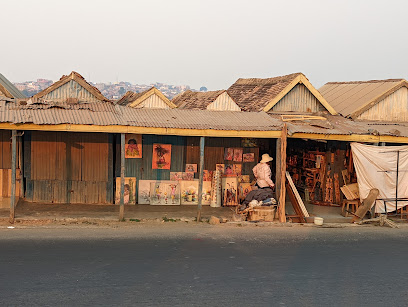
Santilo
Explore the vibrant Santilo shopping mall in Antananarivo for a unique blend of local and international shopping experiences.
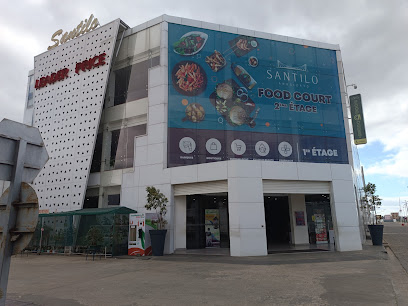
CITY CENTER
Discover the heart of Antananarivo at the City Center, where shopping meets culture in a vibrant atmosphere.
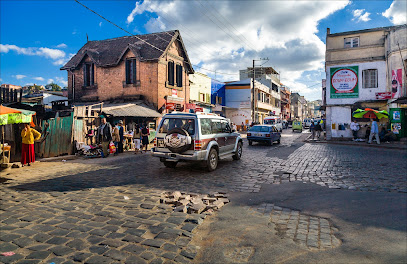
Vogue Fashion Boutique La City Ivandry
Explore the vibrant styles at Vogue Fashion Boutique La City Ivandry, where contemporary Malagasy fashion meets unique style.
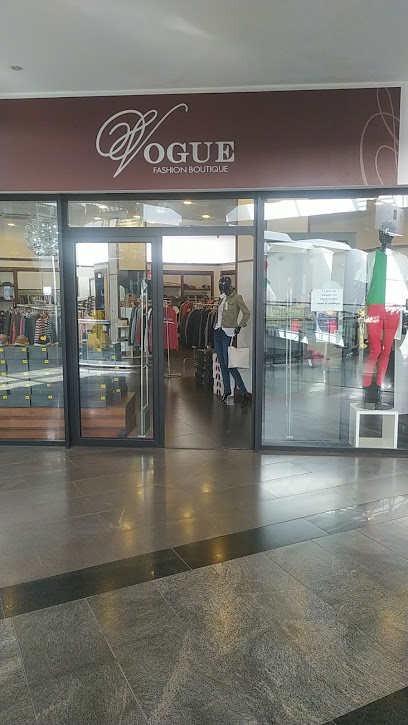
l'Adresse
Explore the latest fashion trends at l'Adresse, a chic clothing store in Antananarivo that showcases Malagasy culture and style.
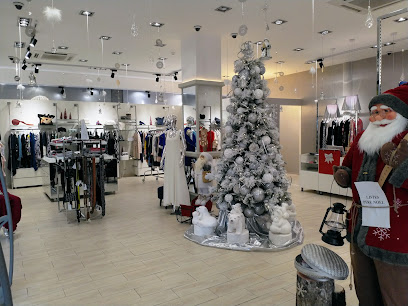
El Store
Discover a vibrant shopping experience at El Store, Antananarivo's premier mall offering local crafts and international brands in a welcoming atmosphere.
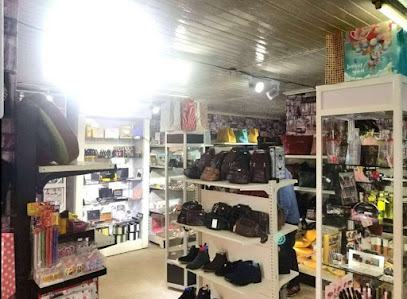
Boutique TUTO Good Things Anjanahary
Explore Boutique TUTO Good Things Anjanahary – your go-to gift shop in Antananarivo for unique Malagasy treasures and souvenirs.

Saffron Boutique
Saffron Boutique: A cultural shopping experience in Antananarivo showcasing unique Malagasy crafts and fashion.
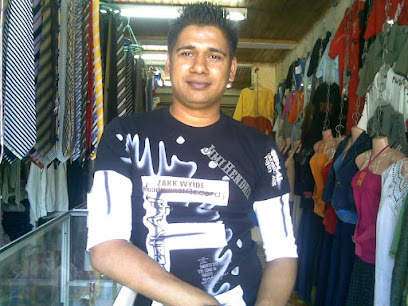
SHOPPING CENTER
Explore Antananarivo's vibrant shopping center, a cultural hub filled with unique shops, local flavors, and an unforgettable atmosphere.
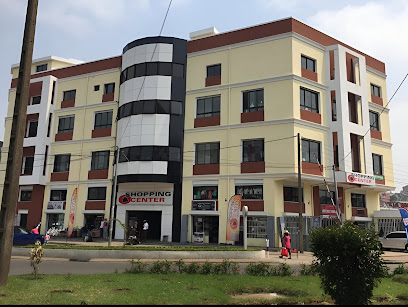
Eden Park
Discover the latest trends in fashion at Eden Park, a stylish clothing store in Antananarivo offering collections for the whole family.

Essential bars & hidden hideouts
Le Carnivore - Restaurant Bar Lounge
Discover the vibrant culinary scene at Le Carnivore - Restaurant Bar Lounge in Antananarivo, where local flavors meet global influences in a lively atmosphere.
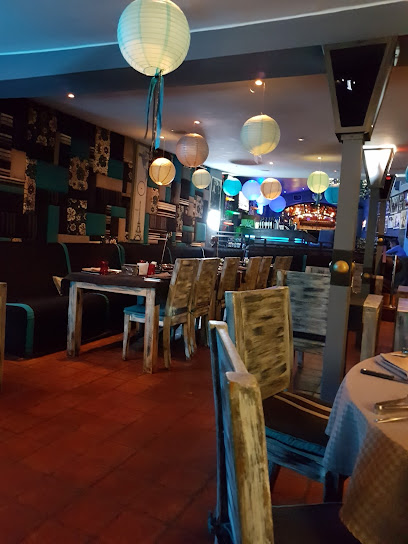
Dzama Cocktail Café Antananarivo
Experience Antananarivo's lively nightlife at Dzama Cocktail Café, where local cocktails and delicious cuisine meet vibrant entertainment.
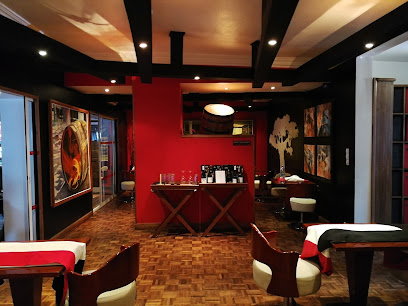
Irish Pub Tana
Discover a slice of Ireland in Antananarivo at Irish Pub Tana, where traditional hospitality meets vibrant local culture.
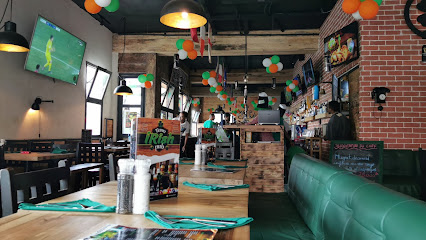
No Comment BAR
Experience the vibrant nightlife and delicious tapas at No Comment BAR in Antananarivo, where Mediterranean flavors meet local charm.
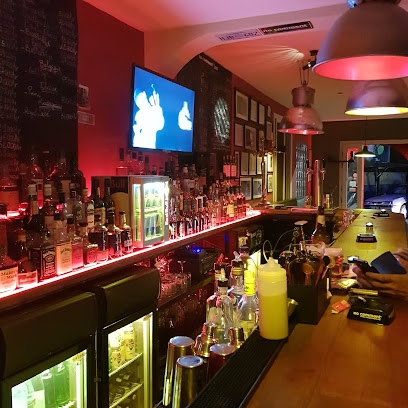
Le Point d'Exclamation Lounge Bar
Discover the lively ambiance of Le Point d'Exclamation Lounge Bar in Antananarivo, a perfect blend of cocktails, pizza, and nightlife excitement.
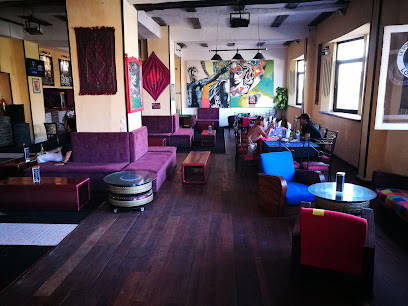
Mojo Bar Tana
Experience the vibrant nightlife and local flavors at Mojo Bar Tana, a trendy lounge in the heart of Antananarivo.
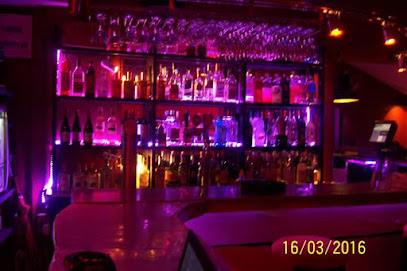
Old 7 bar
Experience the vibrant nightlife of Antananarivo at Old 7 Bar, where locals and tourists unite for unforgettable evenings of music and drinks.
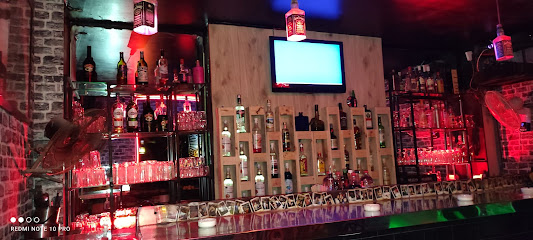
Manson by Marco
Discover the lively nightlife of Antananarivo at Manson by Marco, a vibrant pub offering local drinks and a unique cultural experience.
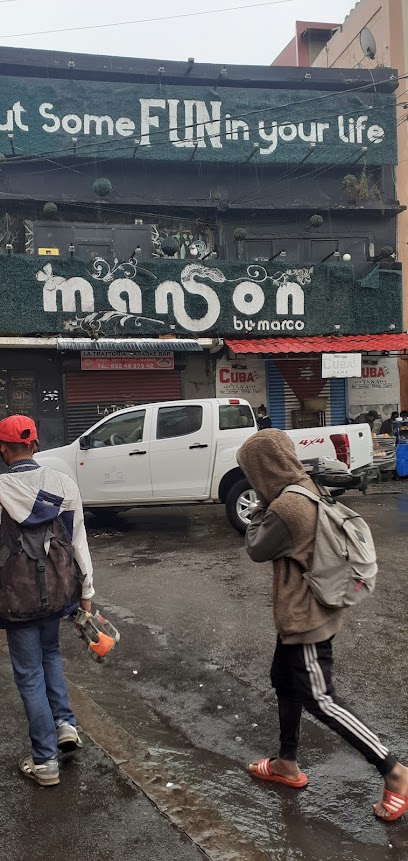
Le Bouddha-Bar antananarivo
Experience the vibrant nightlife of Antananarivo at Le Bouddha-Bar, a stylish lounge offering exquisite cocktails and a unique ambiance for unforgettable evenings.
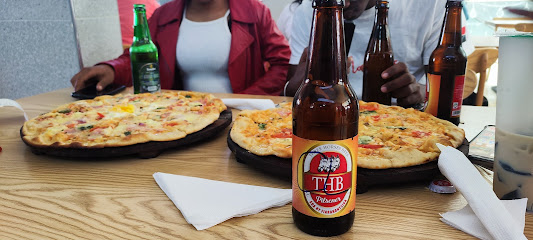
Brothers Lounge Bar
Experience the vibrant nightlife of Antananarivo at Brothers Lounge Bar, where delicious pizzas and karaoke await you.

Local Phrases
-
- HelloManao ahoana
[mah-now ah-whoa-nuh] - GoodbyeVeloma
[vay-loh-muh] - YesEny
[ehn-y] - NoTsia
[tsi-ah] - Please/You're welcomeAzafady
[ah-zah-fuh-dee] - Thank youMisaotra
[mee-sah-oh-truh] - Excuse me/SorryAzafady
[ah-zah-fuh-dee] - How are you?Inona ny vaovao?
[ee-noo-nuh nee vah-oh-vah-oh] - Fine. And you?Tsara. Ary ianao?
[tsah-rah ah-ree ee-ah-now] - Do you speak English?Miteny Anglisy ve ianao?
[mee-teh-ny ahng-lee-see veh ee-ah-now] - I don't understandTsy nandeha
[tsi nahn-deh-ha]
- HelloManao ahoana
-
- I'd like to see the menu, pleaseTe hahita ny lisitra azafady
[teh hah-hee-tah nee lee-see-trah ah-zah-fuh-dee] - I don't eat meatTsy mihinam-bary aho
[tsi mee-hee-nahm-bah-ree ah-ho] - Cheers!Manao ahoana
[mah-now ah-whoa-nuh] - I would like to pay, pleaseTe handray vola azafady
[teh hahn-dry voo-lah ah-zah-fuh-dee]
- I'd like to see the menu, pleaseTe hahita ny lisitra azafady
-
- Help!Fanampiana!
[fah-nahm-pee-ah-nuh] - Go away!Mivoaka!
[mee-vwah-kah] - Call the Police!Miantso polisy!
[mee-ahn-tso poh-lee-see] - Call a doctor!Miantso dokotera!
[mee-ahn-tso doh-koh-teh-rah] - I'm lostDiale
[dee-ah-leh] - I'm illMarary aho
[mah-rah-ree ah-ho]
- Help!Fanampiana!
-
- I'd like to buy...Te hahatakatra...
[teh hah-hah-tuh-kah-trah] - I'm just lookingManiry mihinam-bary
[mah-nee-ree mee-hee-nahm-bah-ree] - How much is it?Ohatra no vola aho?
[oh-hah-trah no voo-lah ah-ho] - That's too expensiveMahafinaritra be izany
[mah-hah-fee-nah-ree-trah beh ee-zahn] - Can you lower the price?Avela miverina ny vola?
[ah-vay-lah mee-vay-ree-nah nee voo-lah]
- I'd like to buy...Te hahatakatra...
-
- What time is it?Inona no ora?
[ee-noo-nah noh oh-rah] - It's one o'clockRaha misy iray ora
[rah-hah mees ee-rye oh-rah] - Half past (10)Ampahafantarina
[ahm-pah-hah-fahn-tah-ree-nah] - MorningMaraina
[mah-rah-ee-nah] - AfternoonHariva
[hah-ree-vah] - EveningAlina
[ah-lee-nah] - YesterdayOmaly
[oh-mah-lee] - TodayAnio
[ah-nyoo] - TomorrowRahampitso
[rah-hahm-peet-soo] - 1Iray
[ee-rye] - 2Roa
[roo] - 3Telo
[tay-loo] - 4Efatra
[eh-fah-trah] - 5Dimy
[dee-moo] - 6Enina
[eh-nee-nah] - 7Valo
[vah-loo] - 8Folo
[foo-loo] - 9Sivy
[see-voo] - 10Folo
[foo-loo]
- What time is it?Inona no ora?
-
- Where's a/the...?Aiza ny...
[ah-e-zah nee] - What's the address?Inona ny adiresy?
[ee-noo-nah nee ah-dee-reh-see] - Can you show me (on the map)?Avela misy manampy aho (amin'ny sarita)?
[ah-vay-lah mee-see mah-nahm-pee ah-ho ah-mee-ny sah-ree-tah] - When's the next (bus)?Aiza ny farany (biraon'ny mpivarotra)?
[ah-e-zah nee fah-rah-ny bee-rah-ohn-nee mpee-vah-roo-trah] - A ticket (to ....)Ny fahabangam-panala (ho a...)
[nee fah-hah-bahng-gahm-pah-nah-lah oh ah]
- Where's a/the...?Aiza ny...
History of Antananarivo City Center
-
Antananarivo, originally known as Tana, was founded in the early 17th century by King Andrianjaka, who established it as the capital of the Merina Kingdom. The city was strategically located on a hill, which provided natural defenses and a commanding view of the surrounding area. Its founding marked the beginning of a significant political and cultural center in Madagascar.
-
By the 19th century, Antananarivo had become the heart of the Merina Kingdom, which expanded its influence over much of Madagascar. The city grew in prominence as a center of commerce and governance, with the construction of important structures such as the Rova (Royal Palace) on the highest hill, which became a symbol of the kingdom's power and heritage.
-
In 1895, Madagascar fell under French colonial rule, leading to significant urban development in Antananarivo. The French implemented a modernization agenda that included the construction of wide boulevards, public buildings, and infrastructure. This period saw the introduction of European architectural styles, which blended with local traditions and reshaped the city's landscape.
-
Madagascar gained independence from France in 1960, but the ensuing decades were marked by political instability and economic challenges. Antananarivo became the focal point for various political movements, and the city witnessed protests and upheavals that would shape the nation's future. The central square, Place de l'Indépendance, became a gathering place for demonstrations and cultural events.
-
In recent years, Antananarivo has experienced a cultural renaissance, with a revival of traditional arts, crafts, and music. The city center hosts various cultural festivals that celebrate Malagasy heritage, including the celebration of the famadihana (the turning of the bones) and the vibrant markets that showcase local artisans. This cultural resurgence has positioned Antananarivo as a key player in promoting Madagascar’s rich history and diverse identity.
Antananarivo City Center Essentials
-
Antananarivo City Center is accessible from various neighborhoods in Antananarivo via taxi-brousse (shared taxis), private taxis, and buses. The main taxi-brousse stations are located in the outskirts, such as the station near Analakely. From there, taxis and buses frequently operate to the City Center, making it easy to reach. If arriving from Ivato International Airport, a taxi is the most straightforward option, taking approximately 30-45 minutes depending on traffic.
-
The City Center is best explored on foot due to its compact size and vibrant street life. However, local taxi-brousse and taxis are available for longer distances. Buses also operate along main routes, but schedules can be irregular. For those looking to cycle, renting a bicycle is an option, although traffic can be congested and challenging. Be cautious when navigating the roads.
-
Antananarivo City Center is generally safe, but tourists should exercise caution. Areas such as the outskirts of Analakely and Isoraka can have higher crime rates, including petty theft and pickpocketing. Always be aware of your belongings, especially in crowded places, and avoid displaying valuables. It is advisable to refrain from walking alone at night in less populated areas.
-
In case of an emergency, dial 117 for police assistance or 121 for ambulance services. It is advisable to carry the contact information of your country's embassy or consulate. For medical emergencies, there are hospitals and clinics in the City Center, including the Hôpital Joseph Ravoahangy Andrianavalona. Ensure you have travel insurance that covers medical emergencies and know where the nearest pharmacy is located for minor health issues.
-
Fashion: Do dress modestly, particularly when visiting churches or local neighborhoods. Avoid overly casual or revealing clothing. Religion: Do respect local customs; when entering sacred sites, dress appropriately and remove hats. Public Transport: Do be courteous, offer your seat to the elderly, and keep noise levels down. Don't eat or drink on public transport. Greetings: Do greet locals with a handshake and a smile. Avoid overly familiar gestures unless you know the person well. Eating & Drinking: Do try local dishes and beverages. Accept food offers graciously. Don't waste food or refuse hospitality as it can be seen as disrespectful.
-
To experience Antananarivo City Center like a local, explore the markets such as Analakely Market for fresh produce and handmade crafts. Sample street food from local vendors, like koba (a traditional snack made of rice and peanuts). Engage with locals, as many are friendly and eager to share stories. For a unique experience, visit the Rova of Antananarivo, which offers a glimpse into the city's royal history and stunning views of the surrounding area.
Trending Landmarks in Antananarivo City Center
-
Tsimbazaza Zoo and Botanical Gardens
-
Queen's Palace
-
Radisson Blu Hotel, Antananarivo Waterfront
-
Radisson Hotel Tamboho Waterfront Antananarivo
-
Radisson Serviced Apartments Antananarivo City Center
-
Cathedrale catholique d Andohalo
-
Andafiavaratra Palace
-
Tana Water Front
-
Rova d'Ambohidratrimo
-
Digue Market
-
Le Palais de Justice d'Ambatondrafandrana
-
Ambohitsorohitra Palace
-
CITY CENTER
-
Alhambra Gallery Ankadimbahoaka
Nearby Cities to Antananarivo City Center
-
Things To Do in Andasibe
-
Things To Do in Antsirabe
-
Things To Do in Toamasina
-
Things To Do in Fianarantsoa
-
Things To Do in Manakara
-
Things To Do in Mahajanga
-
Things To Do in Majunga
-
Things To Do in Ifaty
-
Things To Do in Nosy Be
-
Things To Do in Toliara
-
Things To Do in Mandrare River
-
Things To Do in Fort Dauphin
-
Things To Do in Chirongui
-
Things To Do in Bandrele
-
Things To Do in Dembeni

